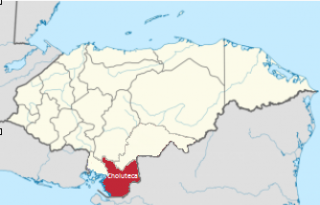Agua Agria #1, Honduras
![]()
![]()
![]()
![]()
![]()
![]()
![]()
![]() Click on Programs to learn more about their work in this community
Click on Programs to learn more about their work in this community
General Information

| Population* | 529 |
| Number of homes | 106 |
| Avg # of people per home | 5 |
| Number and % of children | (0-12 yrs): 150 / 30% |
| Principal sources of income |
Agriculture |
| Water system |
Yes |
| Rural bank |
Yes |
| Number and % of house with latrines |
15%, about 20 houses |
| Electricity | No |
| Nearest Health Center and distance walking | CESAR Los Terreros, 1 hour walking distance |
| Most common illnesses | skin infections, respiratory infections, and dengue fever |
| Highest level of education available and distance from community | 8th grade, school in the community - 15 minutes maximum walking distance |
| Municipality | El Corpus |
| Department | Choluteca |
| Distance from compounds | 1 hour and 20 minutes |
* Population does not reflect how many patients will be seen on medical
brigades as many people from surrounding communities come seeking
Medical Brigades medical attention.
Top Three Needs Expressed
The top three needs expressed by the key community members are a health center in the community, a better water system, and latrines in all homes in the community.
Check back soon for geographical information about this community!
There is one school in the community. It is a "centro basico', or primary school including classes from kindergarten through 8th grade. There are 6 teachers employed at the school who teach there full-time. There are a total of 5 classrooms in the school, one that was newely added. It is located in the center of the community and is about a 5-10 minute walk from each house in the community.
The community has a gravity water system, which starts at a source found high above the community and works through gravity to carry water to all the houses in the community. The system was built buy a Canadian NGO about 36 years ago. About 30% of the houses in the community (approx. 32 houses) are not connected to the water system. Although that leaves about 70% of houses that are connected, the water system is not maintained and the water is not chlorinated or treated before it gets to the homes. This means that each community member must take it upon themselves to individually chlorniate the water and oftentimes drink the contaminated water without treating it.
One of the main needs expressed by community members was an improved water system.
The closest health center to the community is located in a community called Los Terreros. It is a CESAR, or the smaller of the two different types of health centers that the Honduran government offers. This means that most of the time the health center only has one or two nurses on staff and occassionaly may have a doctor, and does not receive much medication. To get to this health center, community members must walk 1 to 1.5 hours.
The most common illnesses in this community are dengue fever, skin infections and respiratory infections.
The main source of income in this community is agriculture. Most people work on large melon farms for melon companies on land that they do not own. Some people have small pieces of land and cultivate basic grains for their own consumption and sale in the community. Some community members also run small bakeries out of their homes where they sell bread and other baked goods. Communtiy members have access to credit through a rural bank in a nearby community and through a local cooperative.
Check back soon for pictures of this community!
This community works with some other organizations, such as World Vision and Agrolibano, an agricultural organization that works with Global Brigades to help provide medical brigades and public health projects.